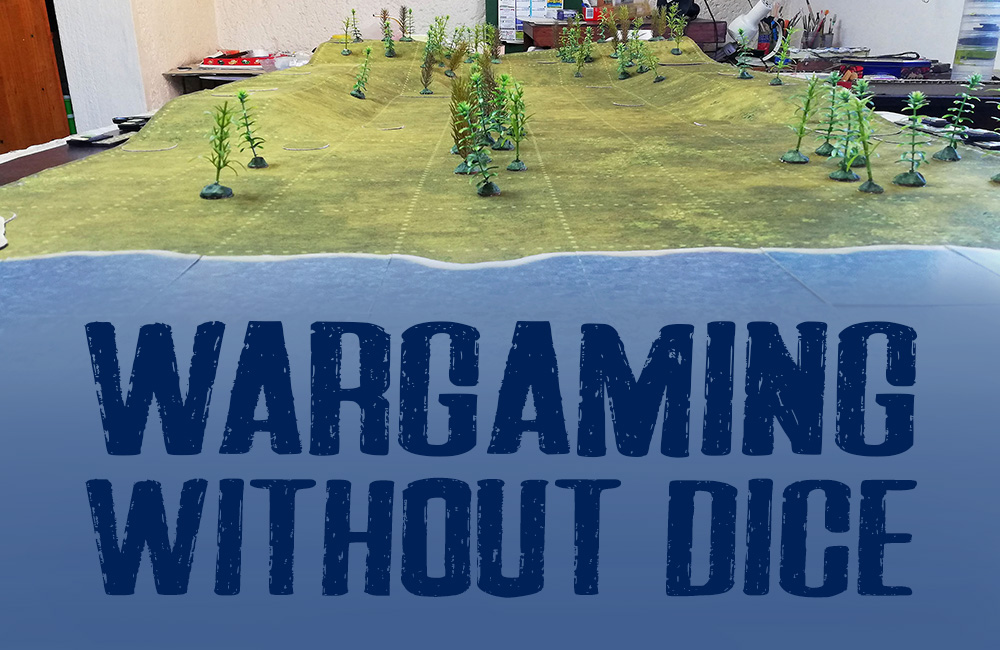There are a number of special formations in Optio, namely
- Composite units
- Legionary line relief
- The infantry wedge / oblique line
- The infantry square
- The regular order and close order pike phalanx
- The shieldwall
- The Theban column
- The cavalry rhombus
- The cavalry wedge
- The Macedonian heavy cavalry wedge (yes!)
- Skirmishers supporting elephants
- Skirmishers supporting cavalry
- Dismounting cavalry and chariots
- Stakes and caltrops
- Merging units (experimental)
THE EARLY LEGION OF THE ROMAN KINGDOM
The early legion consists of two Roman Hoplite bases and two Heavy Foot bases. The bases are arranged in two lines as below and share a common morale scale. It fights in charge and melee combat as hoplites.
The legion is presumed to have a few skirmishers attached and may shoot as if it has a skirmisher javelin foot unit in a thin line (i.e. one stand per square), with a -1 modifier.
This legion cannot execute line relief.
THE EARLY AND MID-REPUBLICAN LEGION
The Republican Roman legion consists of a unit with 2 Hastati bases and 2 Principes bases. The bases are arranged in two lines as below and share a common combat scale.
A legion unit contacted by enemy units on two or more sides or a legion unit with disorder may not execute line relief.
The legion is presumed to have Velites attached and may shoot as if it has two skirmisher javelin stands in a normal line.
This legion may not form a column.
Line Relief
At the player’s choice, during his move or during melee combat, the unit may execute line relief.
The Hastati and Principes lines swop places. The Hastati cannot retire during an enemy charge unless the charge combat result would rout the legion. The unit’s morale is raised to the highest firm (grey) interval. Line relief may be executed only once in a game.
Later legions in this period under the command of Scipio
Africanus or another exceptional Roman general may split the Velites off to form separate units, deploying two Velites stands per legion. The Hastati and Principes remain together as a single unit and may execute line relief. They may not perform missile combat.
THE MARIAN LEGION
The Marian legion unit consists of four legionary bases arranged into two rows of two bases each. The front row bases must be distinguishable from the rear row bases by some identifiable mark.
The legion may shoot into the square in front of it as if it has a skirmisher line of normal depth, i.e. two javelin skirmisher foot stands per legion, before and after line relief. To execute line relief, the two rows of bases are swopped, at which point the morale scale of the unit is returned to the highest firm interval. Line relief may take place only once.
The Marian legion may form a column. It may reform its 1 x 4 column into a 2 x 2 line as per the normal rules for columns.
The first row cannot be withdrawn during an enemy charge unless the charge combat would cause the unit to rout. They may be withdrawn during melee only if the melee combat outcome would cause the unit to rout.
THE EARLY AND MID IMPERIAL LEGION
THE LATE IMPERIAL LEGION
The late imperial legion cannot execute line relief. It is a composite unit of two lines with legionaries in the front line and missile troops in the rear line. It may still perform missile combat.
Line relief means that the legion has more morale intervals than pretty much any opponent it faces. A typical foot unit has 2 firm and 2 shaken morale intervals, written as 2-2. Elite units will have 3-2. The legion, with line relief, effectively has 4-2.
Line relief can however be prevented by flank and rear attacks, so encircling a legion is a good way of beating it as Hannibal worked out. One has also to keep in mind that line relief is effective only if the legion has an equal combat factor against its opponent. In Optio, if two opposing units hit each other in melee with the same combat factor - always 2 for drawn fights, then both units lose a morale interval. This means that the unit with more morale intervals will ultimately win melee combat.
If, however, the legion squares off against the pike phalanx it is in trouble. The phalanx, provided it is deep enough, will score 3 melee hits against the legion's 2.
That means the legion will lose one morale interval in each melee whilst the phalanx will lose nothing. Ultimately the legion will be routed unless it can do something to bring the phalanx's combat factor down. It doesn't take much to disrupt a phalanx - it is very susceptible to less-than-perfect terrain and flank and rear attacks. The Roman commander will have to get creative!






No comments:
Post a Comment